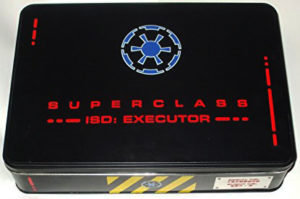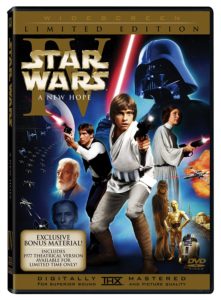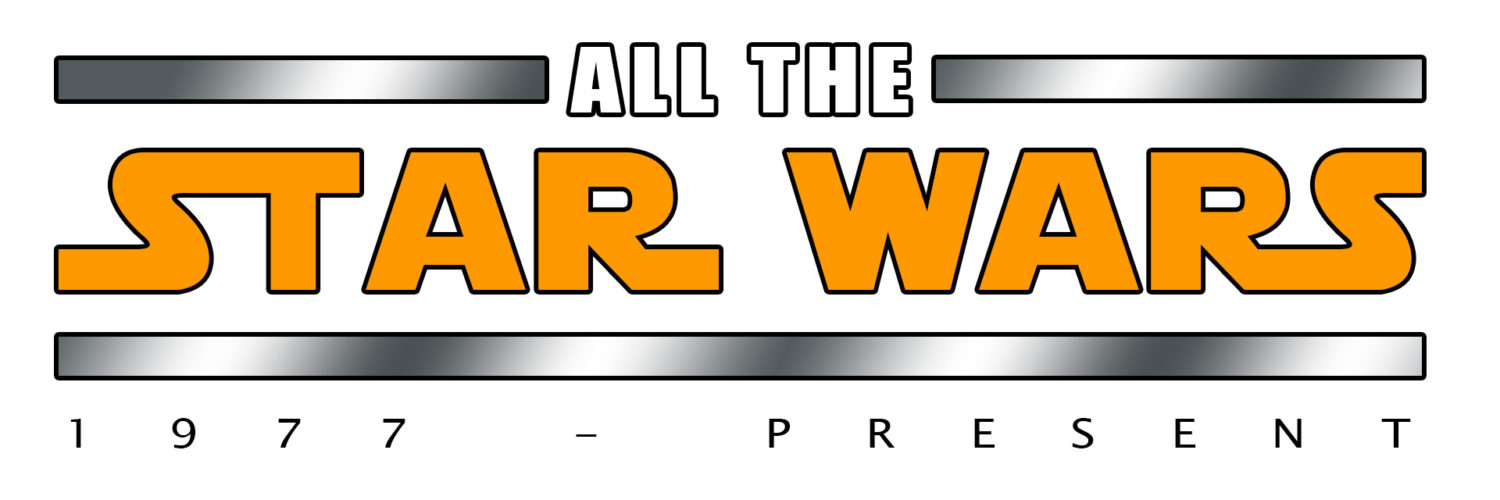
I first “met” Nathan P. Butler via my Facebook group Star Wars Home Video. I had created the group as a place where fellow home video collectors could congregate to discuss the various Star Wars releases over the years. Nathan started posting very informative YouTube videos and answering very random and specific questions posted by other members. His knowledge on the subject was very impressive and eventually I found out about his book that he was writing at the time, ‘A Saga On Home Video: A Fan’s Guide to U.S. Star Wars Home Video Releases’. I pre-ordered an autographed copy.
Being the Star Wars Home Video and Star Wars book collector that I am, it was a must-have.
When I was putting this website together and wanted to conduct interviews with various people connected with Star Wars he was one of the first ones I reached out to. Nathan obliged me with a great collection of answers to my questions.
I’ve posted the first half of the interview below. The second half will be posted later.
No matter if you collect Star Wars home video releases or not it’s a very informative interview with a lot of interesting content.
Enjoy!
Introduce yourself to those who may not know who you are.
My name is Nathan P. Butler, not to be confused with the “Nathan Butler” pen name used by Star Trek: The Original Series writer Jerry Sohl when he was annoyed about “This Side of Paradise.” I’m actually a real Nathan Butler, but without that middle initial, search engines tend to conflate us.
So, I’m Nathan P. Butler. In fandom, I have been the creator/compiler of The Star Wars Timeline Project (now known as The Star Wars Timeline Gold) since 1997 (yup, 20 years, more than half of my life), was one of the early generation of Star Wars podcasters (starting in 2002 and still going today with Star Wars Beyond the Films and Cloud City Casino, both at StarWarsReport.com), and a prolific YouTuber on Star Wars topics with series like From the Star Wars Home Video Library. I have written about the Star Wars saga in my newest book, A Saga on Home Video: A Fan’s Guide to U.S. Star Wars Home Video Releases, along with articles in places like Sequart’s recent essay collections and Movie Magic magazine. I have written for the Star Wars Legends Continuity in the pages of Star Wars Tales #21 (or, as many remember it, “the one with Kyle Katarn vs. the Yuuzhan Vong”) and assisted behind the scenes deriving digital calendar dates for the dated battle maps found in The Essential Atlas.
Outside of Star Wars, I have written a “time travel and telepaths” novel called Greater Good, along with a pair of novellas for the WARS: The Battle of Phobos series, and have stories coming soon in James Robert Crews Wylder’s 10,000 Dawns: A Poor Man’s Iliad.
“By day,” so to speak, I am a social studies (history, political science, economics, etc.) teacher in the Atlanta area, where I live with my wife and what seems like an ever-growing herd of cats. I taught in a face-to-face public school for over twelve years until accepting a position as the lead social studies teacher for our county’s innovative online school program. I am also the lead “Virtual Coach” for our county’s well-received teacher induction program and work with the county as a “curriculum architect” (it’s a cool position but explaining it would put the reader to sleep) for American Government.
Uhm, TL:DR: “I’m Nathan. I’m a busy guy.”
1.) What initially interested you about Star Wars Home Video history and releases and what keeps you interested?
 For most of my time as a consumer of Star Wars home video releases, say 1993 – 2013 or so, I was like many fans. I wanted to be able to watch Star Wars films the “best” way possible on whatever players I had available. I picked up the 1992 VHS releases, which included the Special Letterbox Collector’s Edition (the first saga VHS release in widescreen), then just had to get the THX remastered versions in 1995. Oh, but then I couldn’t miss out on getting the Special Editions in 1997, or the long-awaited DVDs (which turned out to be, uhm, More Special Editions) in 2004, and then the gorgeous (but again changed, so Even More Special Edition) Blu-rays in 2011. For all that time, it was mostly just about having the different versions of the films in the best way available at the time. I ended up with multiple copies on different formats because I did not tend to get rid of older ones when a new release supplanted it (at least in Lucas’ preference, such as the Blu-rays supplanting the DVDs). I had also been picking up releases of the TV series the same way.
For most of my time as a consumer of Star Wars home video releases, say 1993 – 2013 or so, I was like many fans. I wanted to be able to watch Star Wars films the “best” way possible on whatever players I had available. I picked up the 1992 VHS releases, which included the Special Letterbox Collector’s Edition (the first saga VHS release in widescreen), then just had to get the THX remastered versions in 1995. Oh, but then I couldn’t miss out on getting the Special Editions in 1997, or the long-awaited DVDs (which turned out to be, uhm, More Special Editions) in 2004, and then the gorgeous (but again changed, so Even More Special Edition) Blu-rays in 2011. For all that time, it was mostly just about having the different versions of the films in the best way available at the time. I ended up with multiple copies on different formats because I did not tend to get rid of older ones when a new release supplanted it (at least in Lucas’ preference, such as the Blu-rays supplanting the DVDs). I had also been picking up releases of the TV series the same way.
I did not really become a “collector” of Star Wars home video releases until around 2013. I had reached the point where I had acquired pretty much all of the Star Wars comics and novels in the formats that I preferred, and I realized that my chase of those items had just become a matter of keeping up with new releases or catching the occasional signed copy of something. A lot of the “thrill of the hunt” was gone, especially since I was all about collecting stories in their first format (e.g. getting a single issue comic instead of the same story in a later collected version) but not in all of their many variants, reprints, limited editions, and such.
I had been doing a show on YouTube called From the Star Wars Library that looked at Star Wars publications in release order, and that had spun-off what was then just a side series, From the Star Wars Home Video Library. As I got more into featuring home video items in my collection, I saw the interest that was there and became more intrigued myself about formats that I had never pursued (LaserDisc, for instance). Since I wanted to show more, I ended up hunting down more, and pretty soon I was a hardcore, diehard Star Wars home video collector.
For me, the interest comes in both what the releases were and in the overall evolution over time of the films and their home video incarnations. As both a Star Wars fan and someone whose profession is tightly wound around things like history, American law, and economic shifts like those that constantly move the home video market from format to format, it just sort of sucked me in very quickly. It probably also helped that it’s a subject that is explored by a relatively small subset of fandom, so a lot of people don’t know many of the twists and turns of the saga’s life on the small screen. That meant that, just like with The Star Wars Timeline Gold, what I was doing could be an educational resource for fellow fans, which was also right in line with the profession that dominates most of my waking hours.
2.) What is your earliest Star Wars memory?
 I think it’s sitting at home in the first house I lived in back in Evansville, IN and watching the original Star Wars film on TV (probably a TV broadcast because I did not have a VHS copy of A New Hope until 1993), while playing with some of the toys. In fact, until the late 1980s, it was the toys that dominated Star Wars for me, less than the films, but I sure watched the heck out of a VHS my mom made of HBO airings of The Empire Strikes Back and Return of the Jedi, plus the original airing of From Star Wars to Jedi: The Making of a Saga. (To give you a sense of that obsession, we had a recording of Caravan of Courage that only had about half of the TV special. I still watched it plenty of times.)
I think it’s sitting at home in the first house I lived in back in Evansville, IN and watching the original Star Wars film on TV (probably a TV broadcast because I did not have a VHS copy of A New Hope until 1993), while playing with some of the toys. In fact, until the late 1980s, it was the toys that dominated Star Wars for me, less than the films, but I sure watched the heck out of a VHS my mom made of HBO airings of The Empire Strikes Back and Return of the Jedi, plus the original airing of From Star Wars to Jedi: The Making of a Saga. (To give you a sense of that obsession, we had a recording of Caravan of Courage that only had about half of the TV special. I still watched it plenty of times.)
That might actually be a memory from after my memory of seeing Return of the Jedi in theaters in 1983, but when I think back, that’s the one that takes the prime position as a fully-engrossed Star Wars memory.
3.) How long did it take you to write your book and how has the response been in the SW & Home Video collecting communities?
Well, the good news on the book for me was that I had been doing research on the subject for my YouTube videos since about 2013, so I had about three years of research floating around in my brain by the time I actually decided to put anything into book form. That certainly streamlined the process a bit.
I started actually writing around December 2016, and the final version saw print in May 2017, so it took about five months, but that also included a lot of pictures being taken and inserted, plus creating my own cover in Photoshop, so that added a bit to the time. I was pretty intent on getting it out for the 40th anniversary of ANH, but it was a total crapshoot at first on whether that could actually happen. Thankfully, it did.
So far, the response has been fantastic. Great reviews, great response on social media, and just all around support. It helps that this community tends to seem more positive than some other subsets within fandom. There’s a real desire to learn, teach, and help others among Star Wars home video collectors. I really wish it hadn’t taken me until 2013 to get into that particular community. It’s a nice respite from the slings and arrows of some other areas of fandom I’m involved with at times.
4.) Do you have a favorite Star Wars Home Video release?
I think it depends on how I’m defining “favorite” at any given time. I’m a sucker for 3D at home, so my mind immediately jumps to the recent The Force Awakens: 3D Collector’s Edition or Rogue One’s releases from Best Buy or Target, but I think if we’re talking home video releases as a whole, my favorite is actually one I can’t watch. It’s a PAL release from the UK called The Definitive Collection that was released in 1995.  It is sometimes called the Executor Set because it comes in a container shaped like cargo for the Executor. It’s the single most jam-packed package available in that era (or really any other so far) if we’re talking about both video and physical goodies. Matte painting prints, art prints, complete scripts for all three Original Trilogy films, all four 1980s TV behind the scenes specials . . . the works. Sadly, the U.S. never saw a comparable release, so we were stuck with plain old vanilla THX remastered VHS sets that year.
It is sometimes called the Executor Set because it comes in a container shaped like cargo for the Executor. It’s the single most jam-packed package available in that era (or really any other so far) if we’re talking about both video and physical goodies. Matte painting prints, art prints, complete scripts for all three Original Trilogy films, all four 1980s TV behind the scenes specials . . . the works. Sadly, the U.S. never saw a comparable release, so we were stuck with plain old vanilla THX remastered VHS sets that year.
5.) Do you have a favorite packaging of all the home video releases?
If not the Definitive Collection UK VHS set I mentioned a moment ago, I’d probably have to say the Definitive Collection LaserDisc set released in 1994 in Japan. It was basically the same set that had been released in the U.S. in 1993 that later became the basis for the 1995 THX Remastered Editions and the 2006 (and 2008) “bonus discs” of the so-called “unaltered” cuts. (Spoiler alert: They’re not actually unaltered cuts by any means.) Both the U.S. and Japanese versions of the LaserDisc set were beasts in terms of size, but they had nice Velcro flaps to hold in the contents, each film has its own cardboard jacket, while each disc has its own matching sleeve (rather than just a paper sleeve like so many releases), and they had room to include a guidebook and a copy of George Lucas: The Creative Impulse. I simply prefer the Japanese packaging to the U.S. version because (a) the book had a dust jacket whereas the U.S. version did not, if you can consider that packaging of a sort, and (b) the interior of the Japanese version has a cardboard divider so it is easier to separate the guide and book from the LaserDisc jackets.
It’s pretty . . . but you could probably use it as a boat anchor in a pinch.
6.) What is your most prized SW home video collection item?
 I would probably say that it is a package that is full of very commonplace items but that holds them in an unusual way. When George Lucas was presented with the American Film Institute’s Life Achievement Award in 2005, there was a big ceremony (which later aired on USA Network and made waves with Carrie Fisher’s roast of Lucas). At the ceremony, a high tier of guests (but not all guests) received a piece of “schwag” that is essentially a big bundle that includes the 2004 Original Trilogy widescreen DVD set, the widescreen DVD releases of The Phantom Menace and Attack of the Clones from 2001 and 2002, the Indiana Jones boxed set from 2003 (blissfully pre-Crystal Skull), the 1998 DVD release of American Graffiti, and the 2004 director’s cut DVD of THX-1138. All of those, in their original retail packaging and shrink wrap, were put inside a frosted acrylic container that was labeled with the AFI logo, the name of the award, Lucas’ name, etc.
I would probably say that it is a package that is full of very commonplace items but that holds them in an unusual way. When George Lucas was presented with the American Film Institute’s Life Achievement Award in 2005, there was a big ceremony (which later aired on USA Network and made waves with Carrie Fisher’s roast of Lucas). At the ceremony, a high tier of guests (but not all guests) received a piece of “schwag” that is essentially a big bundle that includes the 2004 Original Trilogy widescreen DVD set, the widescreen DVD releases of The Phantom Menace and Attack of the Clones from 2001 and 2002, the Indiana Jones boxed set from 2003 (blissfully pre-Crystal Skull), the 1998 DVD release of American Graffiti, and the 2004 director’s cut DVD of THX-1138. All of those, in their original retail packaging and shrink wrap, were put inside a frosted acrylic container that was labeled with the AFI logo, the name of the award, Lucas’ name, etc.
 I think that one has to be the most prized right now because of what it represents for Lucas as an icon of film history and because it’s nigh-impossible to find most of the time.
I think that one has to be the most prized right now because of what it represents for Lucas as an icon of film history and because it’s nigh-impossible to find most of the time.
Interestingly, I had no idea it even existed until a YouTube viewer, Nathan Veneman, brought it to my attention while it was sitting on the auction site for, of all places, ShopGoodwill.com. (Yes, someone donated that set to Goodwill. The mind boggles.)
7.) What is a piece of SW home video trivia that most people would be surprised to learn about?
I like the surprising pattern, especially given today’s release timetables, of just how the films found their way onto home video. Not counting Super 8 reels that were partial films (and not really home video, just for home viewing, since film and video are different things technically), it took ANH five years to hit home video. Then it took ESB four years and ROTJ three years. If there had been any films between then and TPM, we might have seen two years between theatrical and home video release, but we’ll never know. Then we get to TPM with a one year gap, and finally AOTC became the first Star Wars film whose original release (not counting 1997 Special Editions of the Original Trilogy) on home video game within a year (the same calendar year in this case) of its theatrical release.
We gripe about waiting less than half a year for films to hit home video today, and we look back with scorn on how long it took the Original Trilogy to hit DVD or the original six films to hit Blu-ray, but imagine having just had your mind absolutely blown by the original film in its pre-subtitle theatrical days . . . and then having to wait five years to own it at home, and that’s if you even had a VHS, Betamax, CED, or LaserDisc player by its release in 1982.
We’re totally spoiled today.
8.) A lot of fans want their own copies of the unaltered versions of the original trilogy. What is the best quality they’ll find in an official release capacity?
 This really comes down to their preferred player, really. If we’re talking about modern players (DVD onward), then the only option is to pick up either the 2006 or 2008 DVD releases of the films. (Either is fine, since it’s the exact same discs in both releases, just with different packaging.) Those include a “bonus disc” for each film that includes the supposedly “unaltered” version of that film. They are mastered from the same THX remastered versions from 1993 that were first seen in the Definitive Collection LaserDisc set, with the exception of the opening of ANH.
This really comes down to their preferred player, really. If we’re talking about modern players (DVD onward), then the only option is to pick up either the 2006 or 2008 DVD releases of the films. (Either is fine, since it’s the exact same discs in both releases, just with different packaging.) Those include a “bonus disc” for each film that includes the supposedly “unaltered” version of that film. They are mastered from the same THX remastered versions from 1993 that were first seen in the Definitive Collection LaserDisc set, with the exception of the opening of ANH.
Fun trivia fact: There was never a full-length home video release of ANH, prior to 2006, that featured the film without its subtitle. You could see it that way on the Super 8 film reels of “selected scenes” in 1977, but by the time we saw a full version of the film released on home video, it was 1982, and the subtitle had been added already (in 1981). Thus, for the 2006 bonus disc “unaltered” versions, they used a really nice, pre-subtitle film copy to capture the opening of ANH to splice in with the 1993 master.
So, this means that the 2006 “unaltered” versions are THX remastered versions of ESB and ROTJ as seen in theaters otherwise, while ANH is actually a never-before-seen version with its third stereo audio mix (it had been remastered also in 1985) and the spliced-in film opening without the subtitle. But it’s what we’ve got.
If you want to delve into older formats, the 1993 Definitive Collection or 1995 THX Remastered Edition LaserDiscs are a good alternative (but not really “unaltered” for the same reasons as in 2006, except for retaining the ANH subtitle). To really go back to find the earliest home video releases of those films before they were tinkered with, you would need a copy of ANH from 1982 – 1984, ESB dated 1984 – 1992, or ROTJ dated 1986 – 1992. For my money, though, none of those provide a solid enough experience on a modern TV to be my option of choice. (And they all have the ANH subtitle on them.)
End of part 1.

Episode 9 is just around the corner! I can’t believe it! That new trailer is just fantastic. I’m looking forward to Rey giving Kylo Ren the beat down!